Hans-Urs, you work as an architect for the Swiss Foundation for Social Tourism. How are you connected to the Swiss Youth Hostels (SYH) and what points of contact have you had with environmentally friendly heating?
The SFST is the facility management company of the Swiss Youth Hostels and the owner of a large part of the youth hostels in Switzerland. It is responsible for the planning, construction and maintenance of the youth hostels, and therefore for the heating concept.
Why is climate-friendly heating an important issue for Swiss Youth Hostels?
Sustainability has long been an important part of our organisational philosophy. Such questions have been on our minds not only since the vote on the CO2 Act or the Energy Act.
The SYH want to be sustainable at all levels, in dealings with stakeholders, in the design of products and in environmental protection. This also includes a reasonable use of resources. Switching to an environmentally friendly heating method is a factor with a major impact.
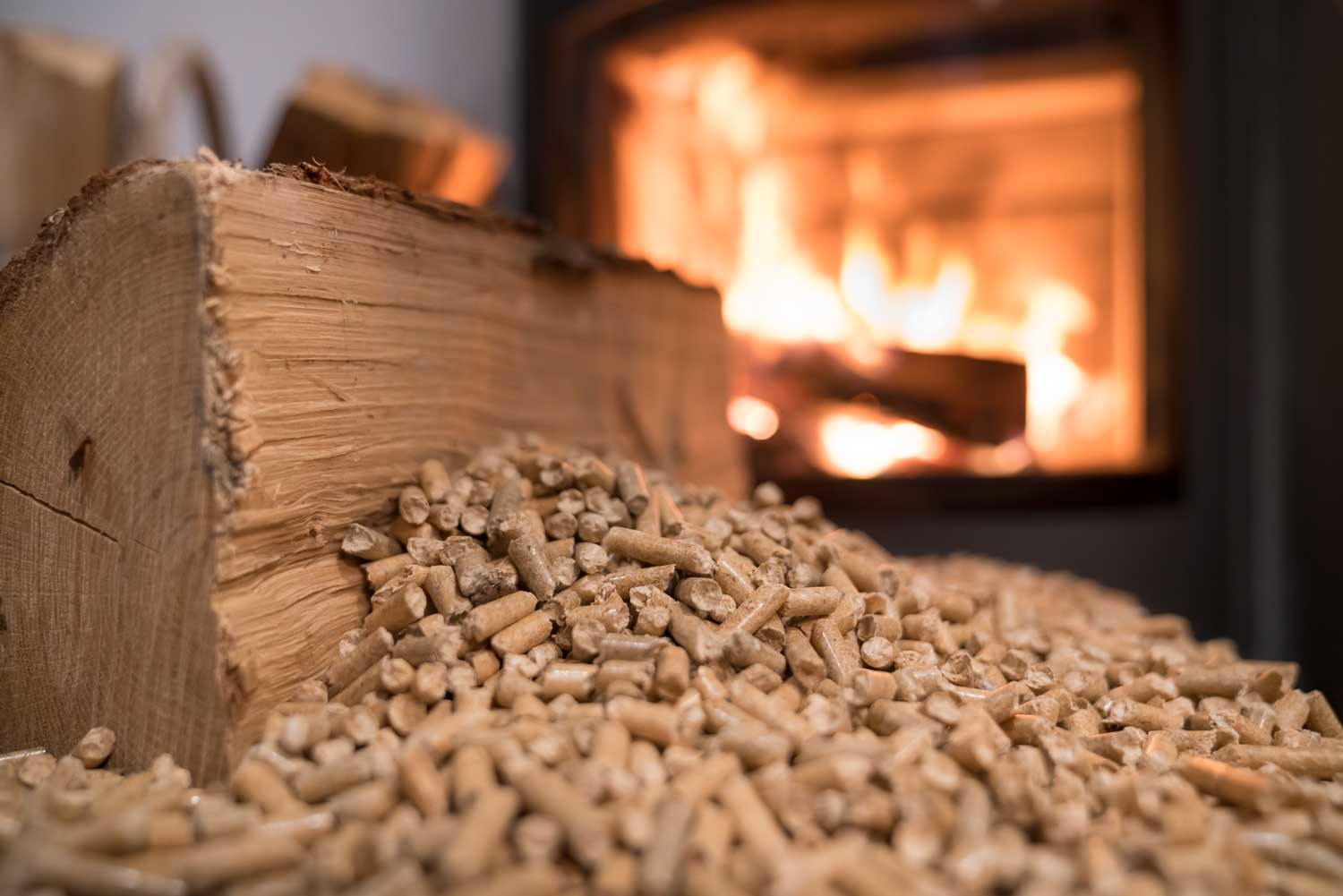
Heating with wood is one of our trump cards for active environmental protection
What strategies are the SYH pursuing to realise climate protection?
Our climate protection goals at the SYH are based on three main objectives: Reduce energy consumption – move away from fossil fuels (substitute) – offset remaining consumption.
At the Swiss Foundation for Social Tourism (SFST), we can influence the second point, especially in new construction and renovation. But we can also help reduce carbon emissions as efficiently as possible with the first and third goals. This can be explained as follows:
1. 1. Reduce consumption (save energy): :What mainly comes to mind here is operational optimisations such as efficient ventilation, the use of efficient light sources or the use of energy-saving showers. Structurally, you can achieve a lot with good facade insulation. In St. Moritz, for example, we have cut our heating needs in half thanks to new insulation (despite adding a storey).
2. Substitute: The key aspect is switching from oil and gas heating to non-fossil energy sources, i.e. investing in renewable energies. This is where, in addition to photovoltaic systems, solar heat and heat pumps, wood pellet heating comes into play.
3. Offset remaining consumptionn: This is possible thanks to carbon offsetting by our guests. For each overnight stay, the guest can make a voluntary contribution, which is then doubled by the youth hostel (even quadrupled on Green Friday).
The final amount flows into the SYH sustainability fund, which in turn can be used to finance global and local projects, including new wood pellet heating systems. For over 10 years, the SYH have been working with myclimate to offset carbon, expanding the joint project into the Swiss-wide «cause we care» movement. In this way, we can set the course for a more sustainable future together with our guests.
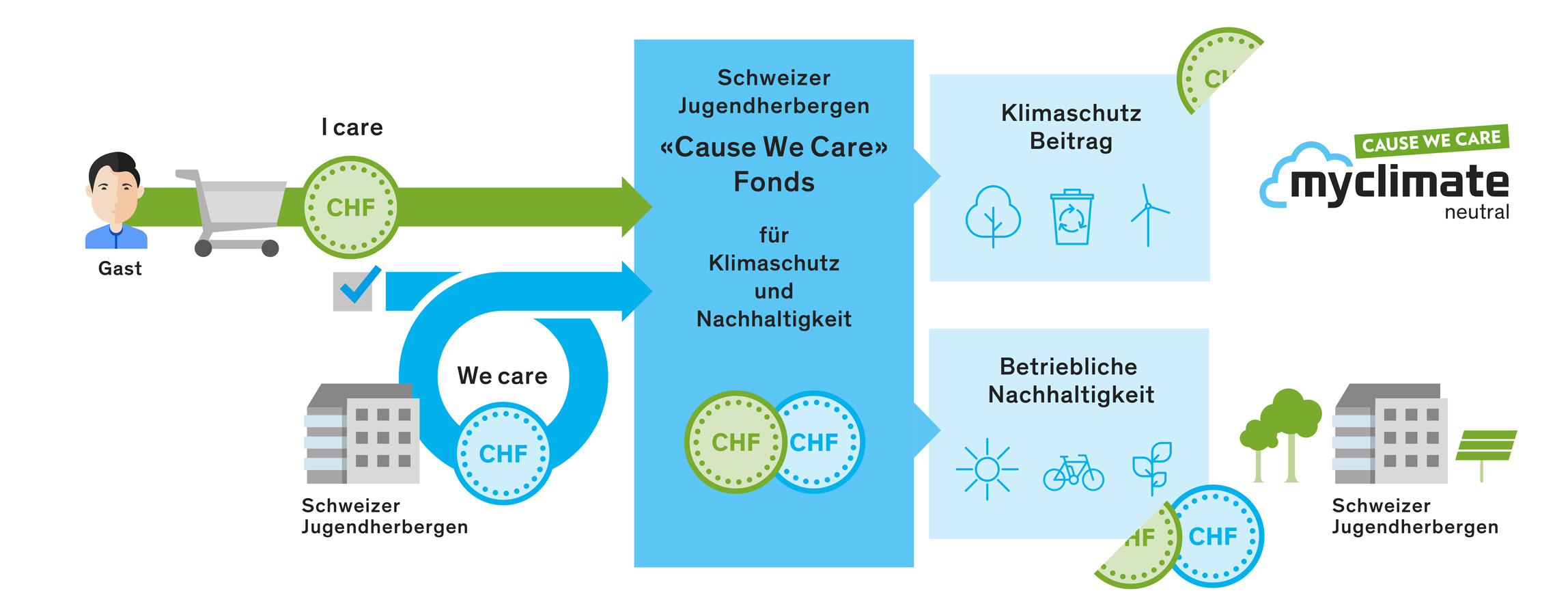
Together for a green future: How carbon offsetting works
Why is heating with wood so much more climate-friendly?
Unlike oil and gas heating systems, wood heating systems are carbon-neutral. They make a concrete contribution to climate protection because burning wood only releases as much carbon as a tree absorbed from the atmosphere while growing.
The overall balance when heating with wood is therefore zero, and that is precisely the goal. Oil and gas heating systems, on the other hand, emit carbon dioxide (CO2) that was previously bound when used. Moreover, the fuels do not grow again. In addition, the wood for our heating systems (pellets, chips, etc.) is produced in Switzerland, which eliminates long transport routes. As we know, most of the oil comes to Switzerland from Africa or the Middle East.

Heat from wood is climate-neutral because the carbon remains in the cycle. ©www.waermeausholz.at
To what extent does wood pellet heating reduce the carbon footprint?
I can give two examples from our network: In 2014, we replaced the oil heating system at Davos Youth Hostel with a wood pellet heating system. This saves about 65,000 litres of heating oil per year (equivalent to the average annual consumption of 26 single-family homes), thus reducing carbon emissions by 175 tonnes.
St. Moritz Youth Hostel also heats with this technology and has been saving around 90,000 litres of heating oil per year since 2010. The conversion to wood pellets was part of a comprehensive energy-oriented renovation of the building. Thanks to wood pellet heating, solar panels, photovoltaics and the purchase of electricity from renewable sources (hydropower), the facility is now completely climate-neutral in terms of heat and electricity.
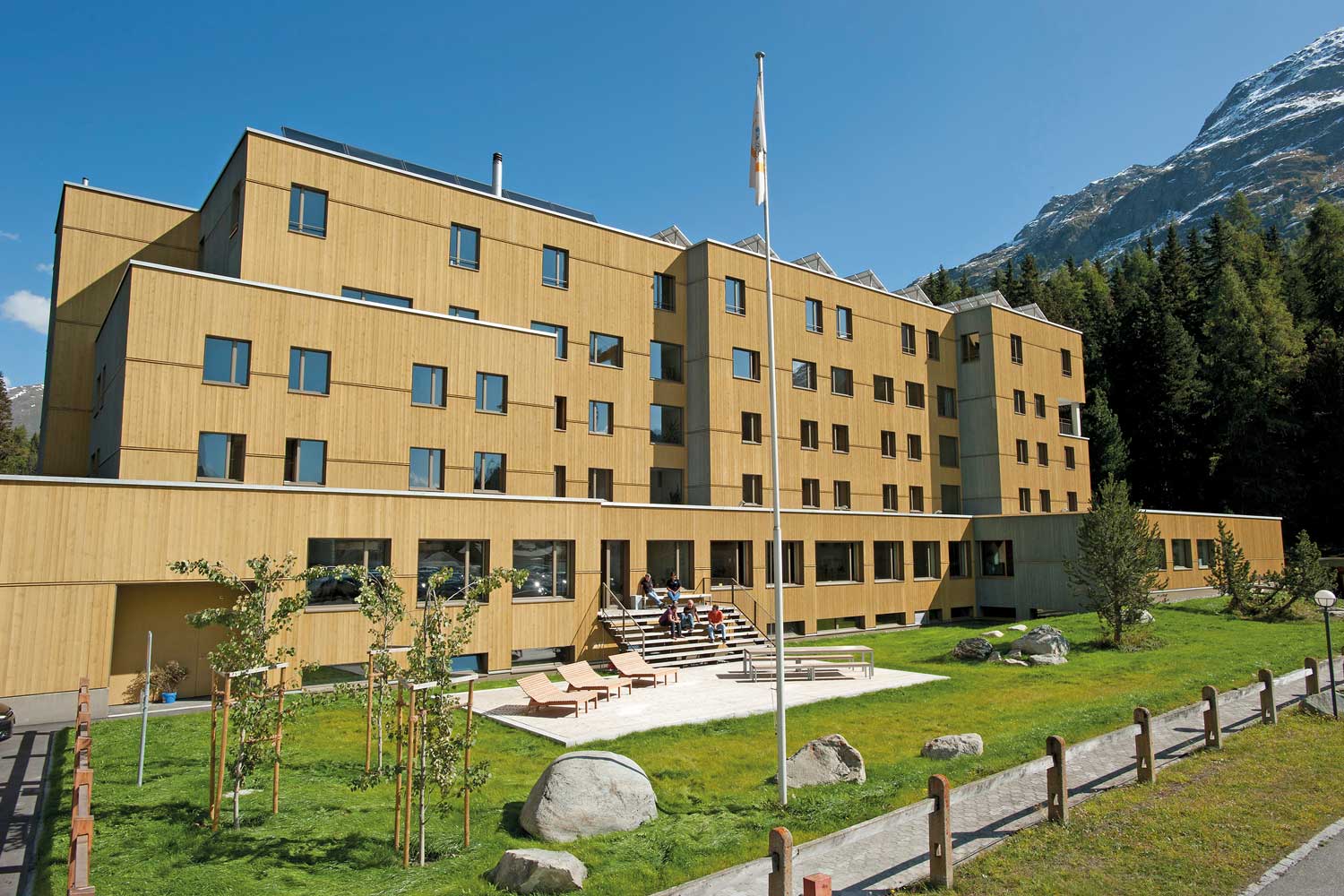
The facade of St. Moritz Youth Hostel guarantees lower heating requirements thanks to efficient insulation

Solar panels also contribute to climate protection in St. Moritz
How expensive is a wood pellet heating system? Why are only three youth hostels equipped with one so far?
Wood pellet heating is not much more expensive than conventional heating with oil or gas: With new buildings, the costs are only slightly higher. It is a sensible option especially for comprehensive renovations or new construction.
However, it wouldn’t make much sense to immediately replace all heating systems with fossil fuels with wood heating systems, as wood is also a limited resource. In a project, wood pellet heating is therefore always one of several possible variants that we consider.
In Valbella, we successfully started with this strategy in 2006, installing the first wood pellet heating system (2006), followed by St. Moritz (2010) and Davos (2014).

Wood pellet heating in Davos Youth Hostel © Hans-Urs
What do you have to consider when it comes to a wood pellet heating system? Does it also have disadvantages?
It should be taken into account that a pellet storage facility is needed for the pellets. Such a storage facility takes up a bit more space than an oil tank.
Burning wood also produces fine dust. Modern systems with good flue gas filters and proper disposal of the ash are therefore important.
What about the newer facilities? How are they heated?
For new buildings, we always opt for carbon-neutral, i.e. climate-neutral heating systems and choose the most sensible option. In Trin (a newer franchise operation), for example, they operate a woodchip heating system, whereas our new wellness hostels (Laax wellnessHostel3000 and Saas-Fee wellnessHostel4000) are each connected to an ecological district heating network.
In the blog post «Maximum travel experience with minimum carbon footprint» you can read about energy-conscious relaxation in Laax and Saas-Fee.
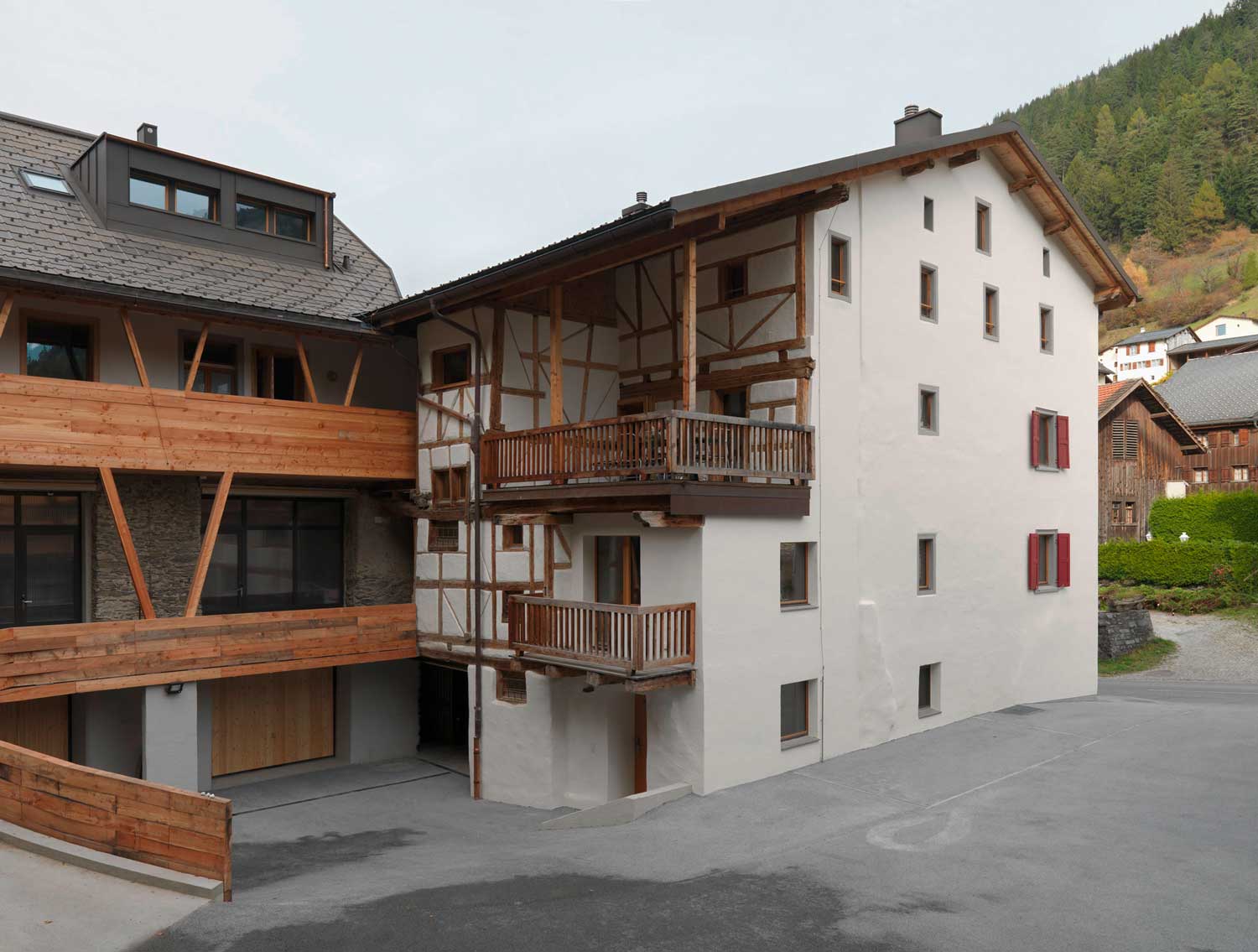
Local wood from the surrounding mountain forest was also used for the renovation of Trin Youth Hostel
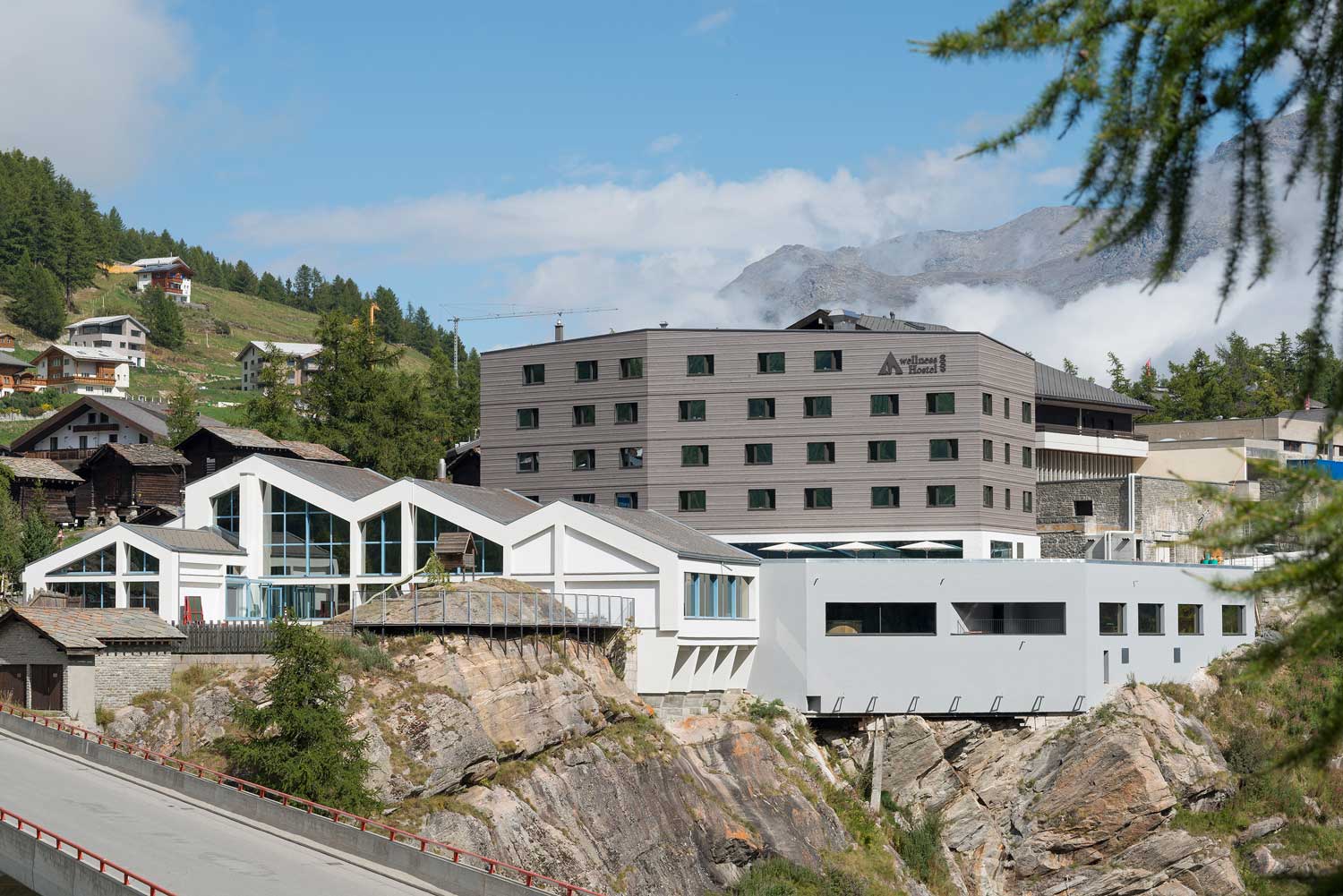
Wellness can also be climate-friendly: In Saas-Fee, thanks to the connection to the solar district heating network
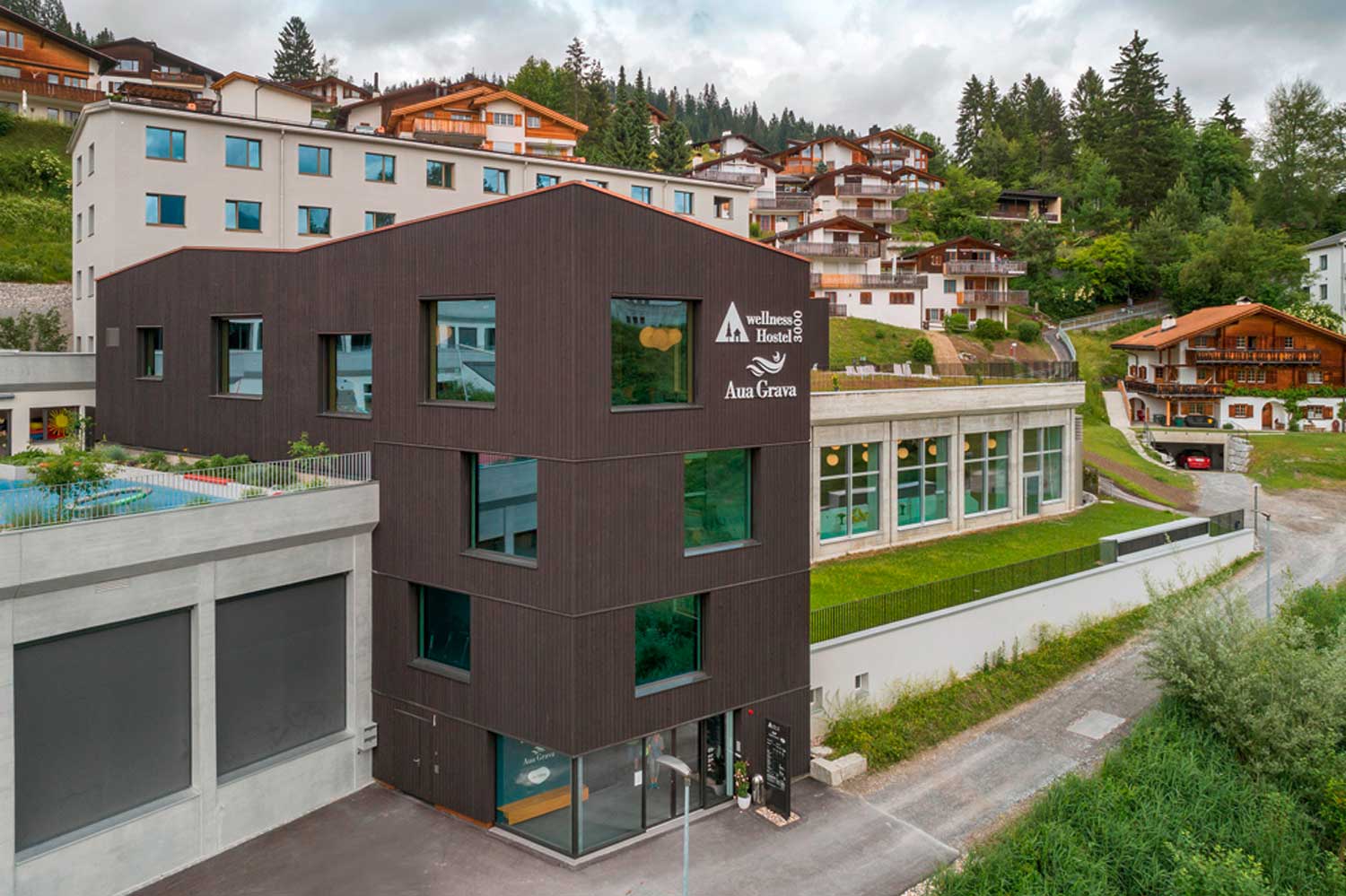
At the Laax wellnessHostel3000 we provide climate-neutral heating thanks to our connection to the regional wood-fired heating plant
Are more wood pellet heating systems planned?
As I said, since a changeover to renewable energy is very beneficial, we examine alternatives such as wood pellet heating systems, heat pumps, district heating, solar collectors or photovoltaic systems – or combined solutions – for every conversion or new building. We are currently planning a new youth hostel in Geneva, which is to be connected to a large district heating network that is also based on CO2-neutral energy.
How can I contribute to climate protection as a guest of the youth hostel?
With the three goals mentioned above in mind, which are primarily our responsibility, nothing can really go wrong: You can therefore enjoy your stay at a youth hostel to the fullest without any cumbersome rules of conduct, as long as you’re not standing in the shower for ages. If you’ve decided to stay at a youth hostel, you’ve already chosen sustainable accommodation.
Nevertheless, as an individual you can do even more for the environment by travelling by public transport, choosing our vegetarian or vegan menu options, generating little waste and opting for the voluntary carbon offset contribution of CHF 0.30 per night/person. In this way, we can shape a sustainable future together.

Thank you for advocating for the climate with us!
An interview with Hans-Urs

Taking a breather with a view of the glacier ©Hans-Urs
Hans-Urs Häfeli is an architect and project manager at the Swiss Foundation for Social Tourism. The SFST is responsible for the construction and maintenance of youth hostels in Switzerland. As an enthusiastic biker, Hans-Urs loves adventures in the great outdoors.






Leave a Reply